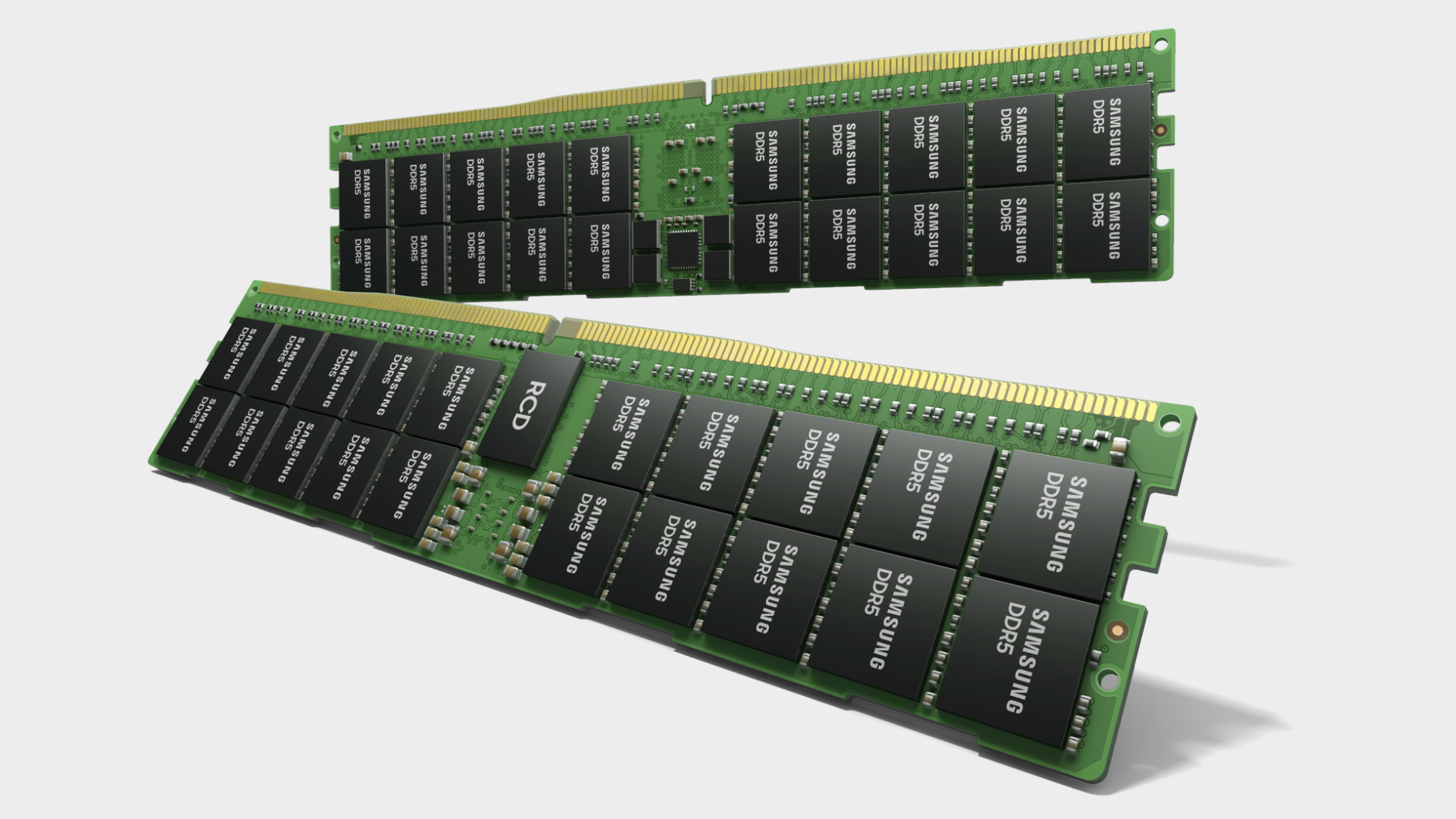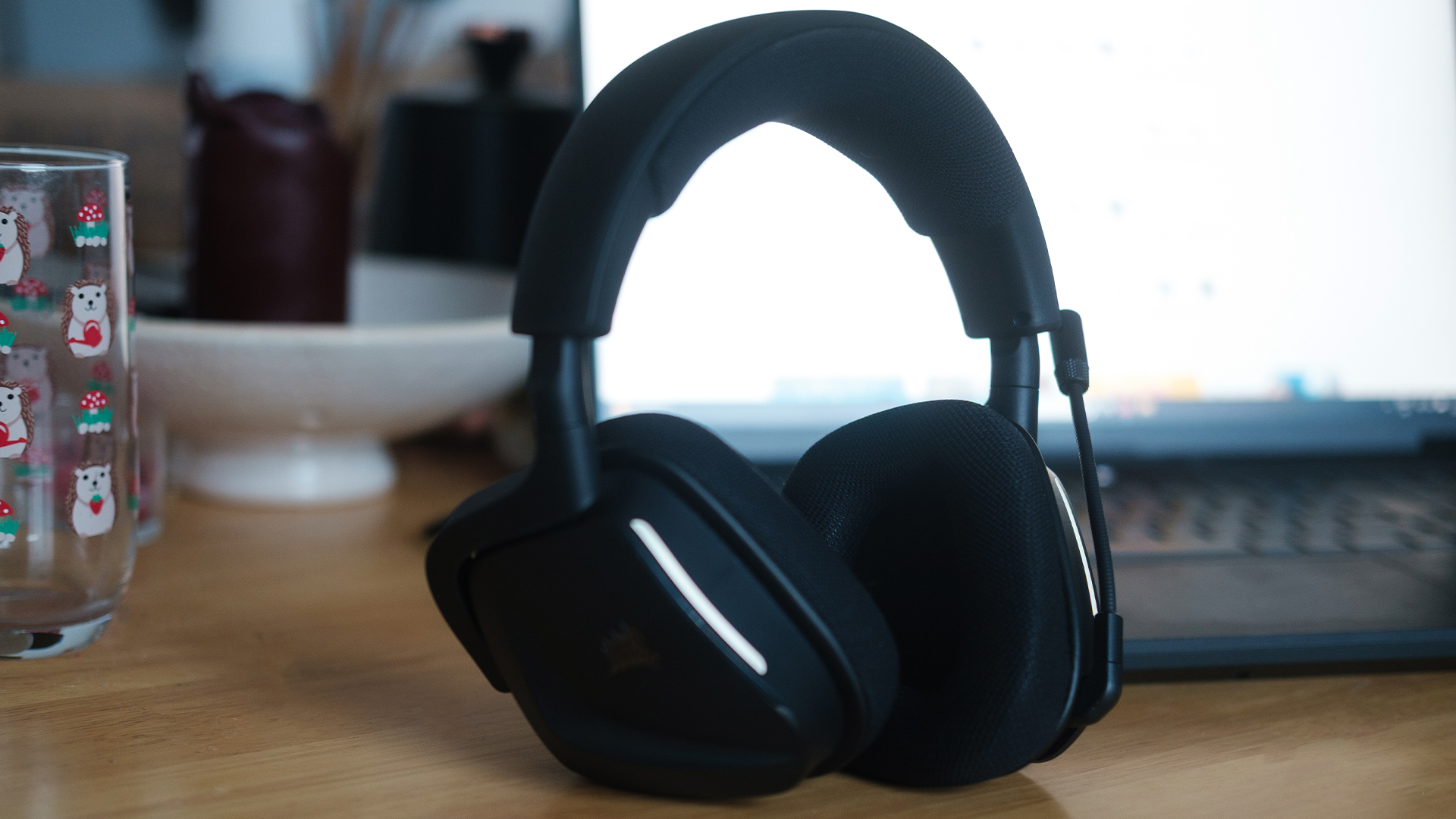Samsung stacks 512GB onto a single stick of DDR5 RAM. This isn't an SSD guys
Intel's Alder Lake will be the first consumer CPU to support the new memory standard.

Samsung has announced a major breakthrough in DDR5 SDRAM design by producing a 512GB DDR5 DIMM. Not only does that make it the most capacious stick of RAM in the world, but Samsung also managed to win first in the speed stakes as well, as the new sticks manage a ridiculous 7,200Mbps.
This has been made possible thanks to Samsung's TSV tech (which confusingly stands for Through Silicon Via), that allows it to stack eight memory chips on top of each other. It also uses High-K Metal Gate (HKMG) materials, which is something traditionally reserved for logic semiconductors, not memory. It's used here as a replacement for the usual insulation layer because, as densities have increased, legacy insulation layers have got too thin, leading to higher leakage current.
HKMG was first used by Samsung in 2018 in its GDDR6 memory, the stuff that you'll find on plenty of graphics cards. Proving that GPUs really rely on the cutting edge of technology development—if such proof were needed.
This new memory also uses approximately 13 percent less power, which is the kind of saving that's important where it'll be used: in data centres.
It's fair to say that we probably don't need 512GB memory modules in our gaming machines, and indeed most desktop processors have capacity limits considerably less than that anyway (64GB or 128GB depending on your CPU).
No, these modules are designed for serious high-bandwidth workloads and will be used in medical research, financial market, autonomous driving, etc. Samsung namechecks Intel and its Sapphire Rapids Xeon Scalable processors in the press release for this new memory.

Best CPU for gaming: the top chips from Intel and AMD
Best graphics card: your perfect pixel-pusher awaits
Best SSD for gaming: get into the game ahead of the rest
It's still early days for DDR5, which offers double the bandwidth of DDR4 and lower power consumption, but there are still no consumer platforms that support it. DDR5 was actually officially released back in July 2020, almost two years late, but there hasn't been a rush to support it, as DDR4 has plenty of bandwidth for most consumer operations.
The biggest gaming news, reviews and hardware deals
Keep up to date with the most important stories and the best deals, as picked by the PC Gamer team.
The first consumer platform to support DDR5 is expected to be Intel's Alder Lake, which is set for release in early 2022. AMD's Zen 4 architecture is also down to support DDR5 and is due shortly after Alder Lake in the summer of 2022. With Samsung pushing development so hard, hopefully we'll have plenty of choice for speeds and capacities by the time it does come to our gaming PCs.
Alan has been writing about PC tech since before 3D graphics cards existed, and still vividly recalls having to fight with MS-DOS just to get games to load. He fondly remembers the killer combo of a Matrox Millenium and 3dfx Voodoo, and seeing Lara Croft in 3D for the first time. He's very glad hardware has advanced as much as it has though, and is particularly happy when putting the latest M.2 NVMe SSDs, AMD processors, and laptops through their paces. He has a long-lasting Magic: The Gathering obsession but limits this to MTG Arena these days.


